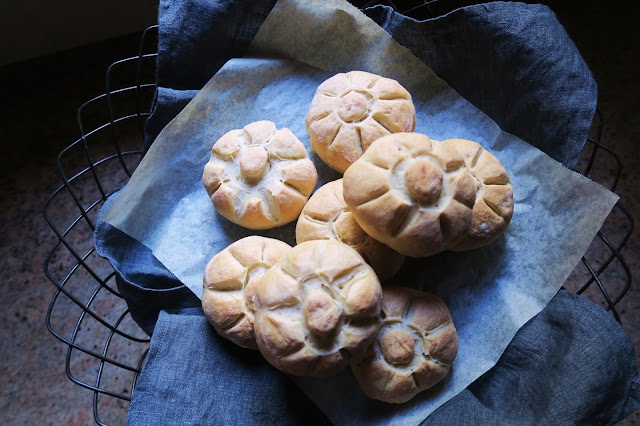This hazelnut cake known by its Italian name
torta di nocciole, is characteristic of Piedmontese cuisine of the Langhe hills where they grow those highly prized hazelnuts I wrote about
here. This cake is predominantly made of hazelnuts, rendering it rich in flavour and worth sharing with you.
While savouring the first piece, it brought back fond distant memories of our visit to Turin, so I thought I would also share a few photos in this post. I also began to crave for a Torinese coffee -
un bicerin to be exact, and one that would go really well with a slice of this cake.
The iconic bicerin was enjoyed at Caffe` al Bicerin, a little coffeehouse in Piazza Consolata, that has been around since 1763. The bicerin is a glass of warm chocolate and coffee topped with whipped fior di latte and is what many come here to have. Yes, I also had to try their grilled chocolate sandwich that came highly recommended.
This little place whose walls are embellished with wooden paneling decorated with mirrors and lamps, small round white marble tables dressed with candles and the wooden and marble counter and shelves with confetti and chocolate jars, is a real gem if you love coffee and history.
It is strategically located opposite the church - il Santuario della Consolata, and story has it that both the church and this coffee shop became closely interwoven with the passing of time. The bicerin became the ideal pick-me-up for the faithful who, having fasted to prepare for Holy Communion, needed energy as soon as they came out of the church.
My friend Rosemarie who lives in Turin and wrote a
guide to her adopted city, had recommended a few places for our short two day stay, and we began our first morning here before exploring the rest of this beautiful and regal city.
Torta di nocciole is a hazelnut cake, similar to the one made with almonds, but a little coarser in texture. The recipe is from Il Grande Libro della Cucina Piemontese by Elma Schena and Adriano Ravera. The book is written in Italian and although the ingredients are clearly listed, the process is explained in prose, leaving some steps to the imagination which I had to intuitively fill in. There were no photos of the finished dish to compare it to, but the cake turned out really well and a hit with many I shared it with.
I will definitely make it again and hope you will too; and if you have been to Torino, I would love to hear from you. I will be sharing more photos in my next post on another dish from this region that uses Tajarin (tagliolini).
Torta di Nocciole (Hazelnut Cake)
Ingredients:
350 g hazelnuts, toasted and skins removed (keep some raw hazelnuts aside for decorating the top of the cake)
100 g plain flour
pinch of salt
2 tsp baking powder
250 g caster sugar
4 eggs, separated
150 g unsalted butter, melted
Start by preheating your oven to 170 C (340 F)
Prepare a 26 cm (10 in) diameter cake tin by greasing it generously with butter and dusting it with flour. I used a springform tin.
If you are using raw hazelnuts, place them in the oven for 15 minutes or so to roast dry until they begin to take a bit of colour, but do not burn them. If you have purchased roasted hazelnuts, then omit this process.
Make sure that the skins are removed. This can be done by placing the cooled hazelnuts in a clean tea towel, fold the towel over and with your hands rub the nuts back and forward to remove most of the skin. Discard the skins.
Place the nuts in a food processor and pulse until they are finely ground, but not too fine. They should be coarser than almond or hazelnut meal. Set the ground hazelnuts aside in a bowl along with the flour, salt and baking powder. Mix with a spoon.
Separate the eggs whites from the yolks and set aside. In a separate bowl beat the egg yolks and sugar until light and fluffy. I used a hand held electric beater. Then add the melted butter a little at a time as you beat, until all combined. Add this mixture to the dry ingredients and with a spatula fold through carefully.
Using clean beaters, whip the egg whites until stiff but not dry, and fold into the cake mixture a bit at a time until all combined. The mixture will appear more dense and grainy than regular cake batter.
Pour the mixture in the prepared tin and dot with extra raw hazelnuts as I did. Bake for 30 minutes, or until a skewer comes out clean from the center.
Allow to cool slightly before inverting on a cooling rack. Lightly dust with icing sugar if you like before serving.
As mentioned above, this cake would go well with un bicerin or your regular cup of espresso coffee.
Enjoy!








Comments
Post a Comment